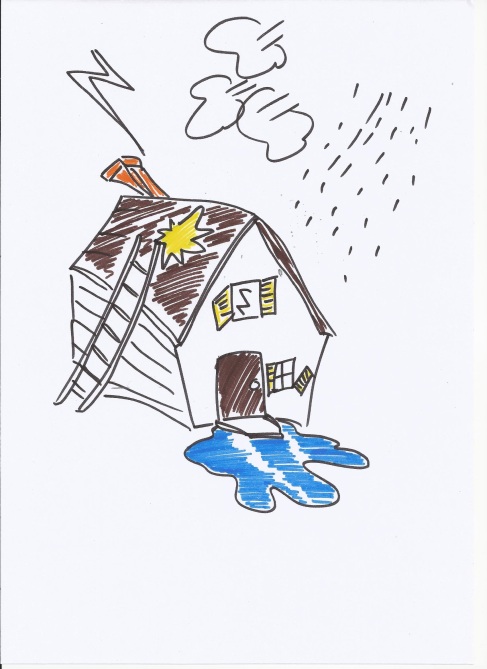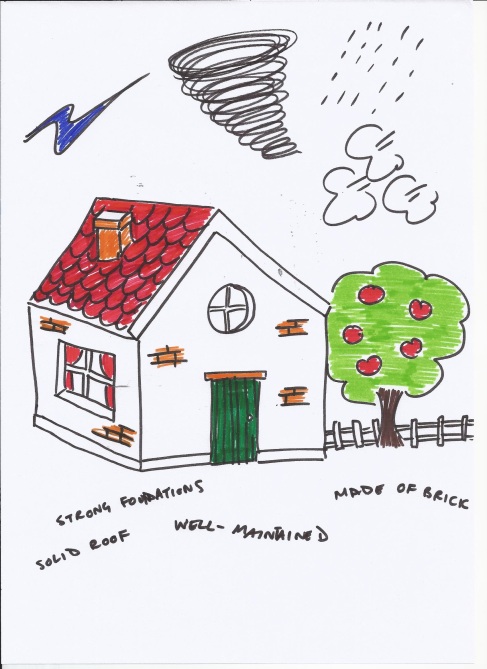In my previous post I talked about resistance to change and vulnerability, primarily caused by fear, as obstacles to taking action in pursuit of our goals and solutions. This post shows a simple visual technique for building your resilience against failure, criticism, ridicule and knock-back. Remember we cannot prevent these things from happening – they are part of life. We can invest a lot of energy trying to prevent them when our energies may be better invested in building our resilience to them.
What is resilience and how do we gain it? Resilience is defined as the ability to overcome difficulty – to spring back. Actually most of us are far more resilient than we think. We just need to recognise our skills and strengths. It’s easy to forget them when we experience a set-back. It’s easy to beat ourselves up or join in with those on the outside already doing a great job of that for us!
Imagine you are a fighter pilot. You’re jet is shot at and starts to go into a spin. What is your first tool from your resilience toolbox? The ejector seat? Well that’s a pretty good one! But the first tool is your skill as a pilot. You might be able to bring the aircraft back under control. We often forget that our inner strengths, innate talents and learned skills are available to us, choosing to turn to external resources first. In this instance bringing the aircraft back under control isn’t possible. You and your Navigator have to eject. However your own skills and strengths are still at play because you, as the pilot, are the only only that can press the eject button (in some training aircraft the pilot is in the back and has to shout ‘eject, eject, eject’ to the training pilot so he knows when to press it). You have to keep your cool to undertake that task. So you’ve ejected from the aircraft and at this point you are using two external resources – the ejection seat and the parachute. First obstacle overcome. You land in the sea at night, in strong winds and heavy rain. Now you have to survive until you are rescued. The tools in your resilience toolbox are made up of both external and internal resources. External resources include the life-raft, your life jacket, whistle and flare, the survival pack in the life-raft and eventually the search and rescue helicopter that is going to find you and winch you up to safety. However you are very much dependent on your inner resources to make it that far. They might include remaining clear-headed, your ability to swim, problem-solving skills, good memory from the training exercise, teamwork, intelligence, tenacity and even humour. Take a look at the picture below:
The ‘Survival’ picture shows all the external problems and obstacles and both the external and internal resources. You can draw the same picture for your current goal or solution in order to help you take action instead of remaining stuck, paralysed with fear. In place of the wind, rain and waves add the obstacles, fears and problems to the picture. This picture works particularly well for businesses. So the wind, rain and waves might be finance, regulations, lack of customers. Why not throw in some sharks for good measure – I missed them off my picture but they are a great one to represent external critics! The whistle, life-raft, life jacket, survival pack, flare and helicopter might be colleagues, savings, local business support organisation, etc. But the most important element to add to your picture are the internal strengths and skills. List absolutely everything you can possibly think of. The important thing is to make sure there are more internal skills and strengths than external ones and problems/obstacles. You should end up with a picture that clearly shows at the bottom a raft (no pun intended) of inner skills and strengths combined with a handful of external resources that clearly outweigh your fears, problems and obstacles. Keep this picture in mind at all times or display it somewhere prominent to remind you that you have enough resilience make yourself vulnerable enough to take the risks required to move forward and take those actions steps that support your goal.
In his book ‘The Inner Game of Stress’, Timothy Gallway uses the concept of the Tree of stability to help identify our resources to help us retain stability against stressors. The same idea can be applied to resilience against fear of vulnerability and change. The roots of the tree are the external and internal resources that keep the tree stable when faced with stressors (in our case obstacles, fears and problems) represented by wind, rain, lightening and tornadoes. I think the Tree of Stability works particularly well for personal goals and Timothy Gallway lists around 30 inner resources we each have available to us from imagination and humour, to empathy and compassion.
Tim uses the analogy of the story of the The Three Little Pigs. Only the house of bricks withstands the wolf’s attempts to huff and puff and blow the house down. This is another image you can try. Again, draw on the fears, problems and obstacles as perhaps, wind, rain and lightning and the resources, represented by strong foundations, a solid roof, keeping it well-maintained, etc. as the external and internal resources you have available. Draw them underneath the house where the foundations would be. Would you rather have this house
Or this one?
Using one of these images (‘Survival’, Gallway’s ‘Tree of stability’ or ‘Strong Foundations’) or one of your own works very effectively to help you keep in mind the resources you have available to you to remain resilient in the face of failure, criticism or knock-back. Once you realise just how resilient you are there is nothing stopping you from taking that step, putting yourself out there, making that presentation, approaching that person or proposing that solution. You can be confident in your abilities and confident that in the event of a set-back you can pick yourself up, dust yourself off and carry on.
Let me know how resilient you are.




